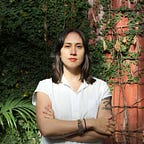The backstory: some context on my call to action
The thoughts I shared in a call to action for engineering were, to some extent, a result of the energy I have put into understanding and improving how teaching and learning are conceptualized in adulthood’s various contexts. During my time in my doctoral program in curriculum and instruction, it was clear that most educational researchers were devoted to understanding K-12 spaces and innovating around learning for children. I spent my free time seeking out those who were working with adults in higher education and the world outside of academia (I found a few). It was curious to me how there are no checks of whether a teacher is skilled in or prepared to teach in higher ed or the professional world; it only matters how strong their subject matter expertise is. If you have ever been sent to a professional development workshop (just for example), you know that an expert does not a teacher make.
I took a chance and tabled my doctorate to explore the tech world in California because I had the opportunity, bringing what I had learned in academia with me. I fleshed out my focus and desire to learn more about teaching in non-classroom spaces, and started to understand a bit better how teaching looks after university is over. At work, it’s just called Learning & Development, or Training.
The spirit is right; learning at work to be better at your job is a good use of time and money. It’s investing in people who are selling their time and labor for your business goals. The words, though, are, problematic. They are indicative of assumptions that learning at work is utilitarian: to ameliorate deficiencies, improve a behavior around executing a skill, and/or to quantify the qualitative in some other way.
The thing is that work ultimately gets done, and successfully, because of who people are (ask a doctor with great bedside manner how compliant their patients are versus one with horrid bedside manner). And learning is not just about receiving information to correct a knowledge deficiency. True learning inspires the learner to see connections between knowledge they already possess and the new information, to make associations between their past experiences and new ones, and best of all, to see new solutions where none existed before because this learning excites them to innovate.
In other words, true learning leverages self-determination, agency, and who a person is, not just what they do. It does not separate out the (poorly-titled) “soft skills” from the rest; it leaves intact those skills’ integration and incorporation into the skills-building experience.
What problems will we better recognize, and more creatively solve, if we look to clues from educational research to shape how we go about learning at work?
